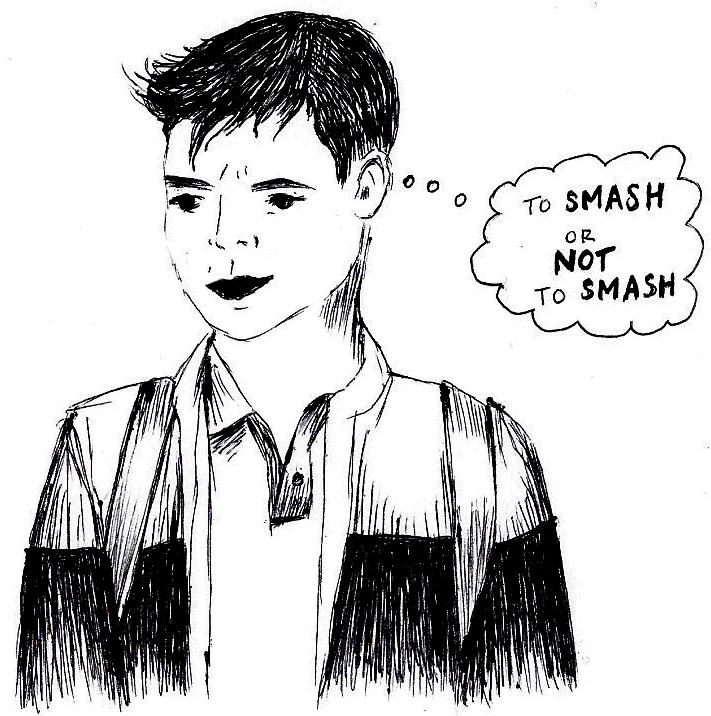
My high school was nothing like the one in Netflix’s breakout show “Sex Education,” and I doubt yours was either. Their clothing is nicer, their bullies larger, their hot people hotter and everyone has a lot more sex. When 16-year-old Otis Milburn, played by Asa Butterfield, locks his bicycle and walks into his school building, he enters a teeming mess of sexual frustrations, anxieties, hopes, dreams and fixations. And by some combination of actual expertise and remarkably blue eyes, he is the one person everybody wants to talk to about all of it.
Otis’ mother, Jean Milburn, played by Gillian Anderson, is both a sex therapist and a frequent haver of casual sex. Otis has absorbed so much from her lack of boundaries between work and home — in a running gag, her sexual partners keep mistaking his bedroom for the bathroom — that despite never even having masturbated, he is well qualified to advise his classmates on everything from penis anxiety to relationship insecurities. Jean is a near-perfect character, bringing exactly the right mix of nonchalance and anxiety to every interaction with her son. “Let me get you some condoms,” she says briskly as Otis and his friend Eric head to their first real party, right after reminding them to buddy up if they decide to do drugs. I spent the majority of my weekend evenings throughout high school watching early episodes of “The X-Files,” and there is a profound and specific joy in seeing Anderson with platinum-bleached hair smoking weed on a balcony. By the dismal, incoherent final seasons of the show, Scully was reduced to a mopey, powerless alien/medical punching bag, but “Sex Education” brings Anderson roaring back full-force. With cropped hair, a wardrobe made up largely of silken jumpsuits and the world’s crispest pronunciation of the word “penis,” she is both everybody and nobody’s mother.
A standout scene in the first episode tracks Otis as he frantically tries to desexualize his mother’s home decor before the school bully comes over to work on a Shakespeare assignment. Butterfield perfectly captures the mixture of defensiveness and embarrassment, which emerges when viewing one’s own family through the eyes of others, although in his case it’s not embarrassing baby photos, but large wooden sculptures of phalluses that have to be taken off the walls. And, like most mothers, it’s not her character but her inconsistencies that have the most profound impact on her son. Jean, for all her retroactive sexual openness, gives the sex talk tersely and grimly to a young Otis in a flashback, telling him that “sex can ruin lives.”
In the vibrant universe of the show, the sky is very blue, the grass is very green and the vintage jackets are very vintage. The town where Otis lives is of unclear size, demographic makeup and centrality, where every character lives both within walking distance of every other character and on a beautiful piece of property from which no other house can be seen. As a result, Otis’ high school exists outside of any construct of urban, rural, rich, poor, good or bad. This is one of the only areas in which the show falls short, as certain tropes feel unrealistic and unnecessary. Bullying, for instance, persists in the shoving-into-lockers variety in a way it rarely does in real life. Nonetheless, 2019 issues, like sexting and anti-abortion activism, are addressed throughout the show without any simple, “Glee”-style resolutions.
Unlike “Glee,” “Sex Education” argues that high school drama doesn’t need to spill over into real life for it to have meaning. There is never a sense that Otis will someday break out and become a nationally famous sex therapist, or even that he’ll be wildly popular and successful when he goes to college two years later. High school satisfaction, regret, politics and love are not brought down to scale, because they don’t need to be. When a student is blackmailed using a nude picture, Otis and his sidekick/crush Maeve treat it like a high-stakes criminal investigation, because to that student, it is.
When another character is the victim of a violent hate crime on the street, the immediate impact on him is profound, but its deeper effects are fully revealed in the context of the cruel, unceasing bullying he suffers within school. Neither the attack nor the bullying is more or less traumatic, but the former never serves to minimize the latter.
No, the teenagers on “Sex Education” probably aren’t like real ones. But the beauty of the show is that maybe they are. Without Otis and Jean to guide them, all of their problems would be resolved privately, or not at all. And don’t worry: The psychological discomfort of watching Hugo/Ender/the friend of the Boy in the Striped Pajamas furiously attempt to masturbate in a public bathroom lasts only as long as you let it.
Noa Rosinplotz | noa.rosinplotz@yale.edu .







